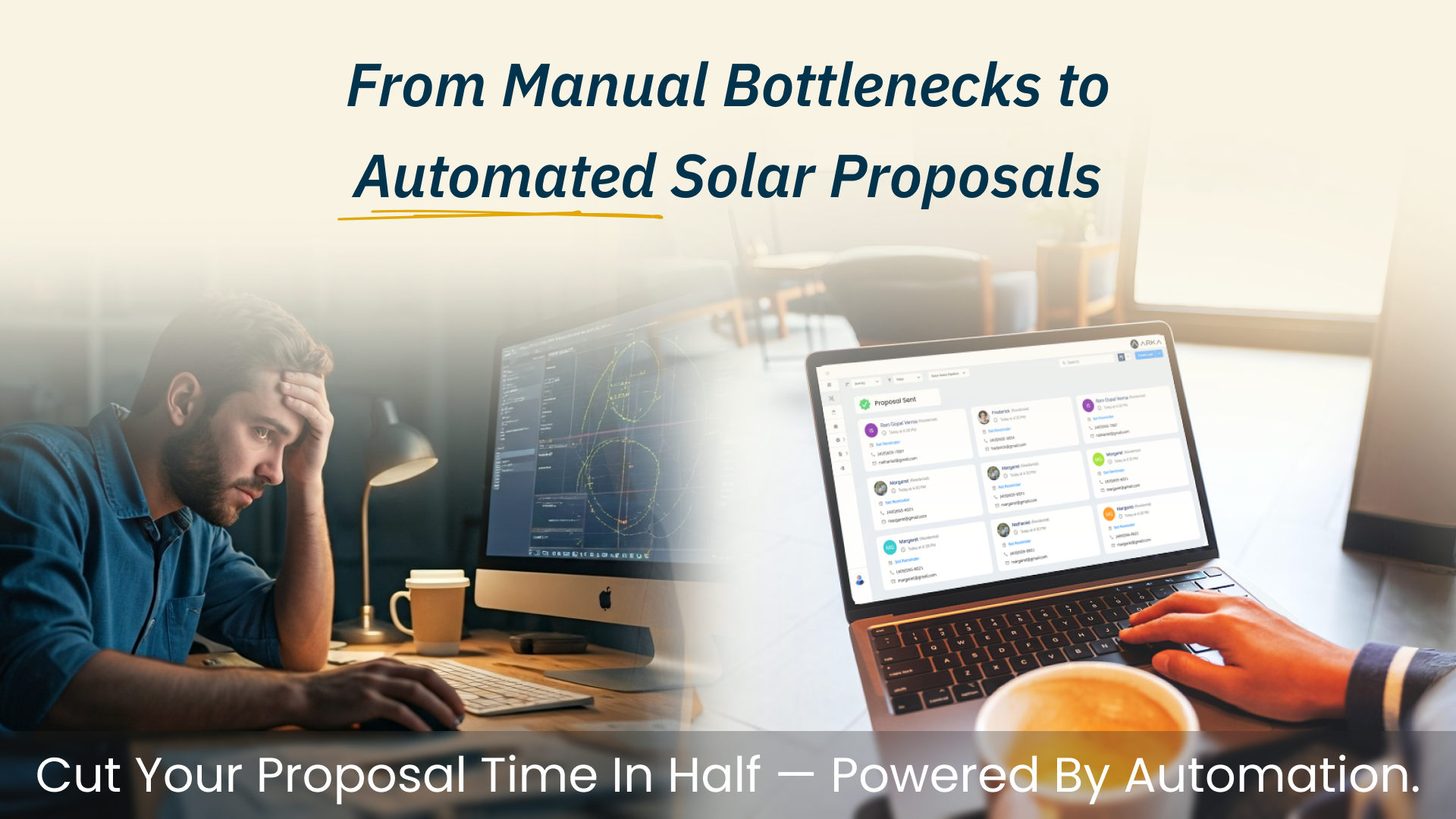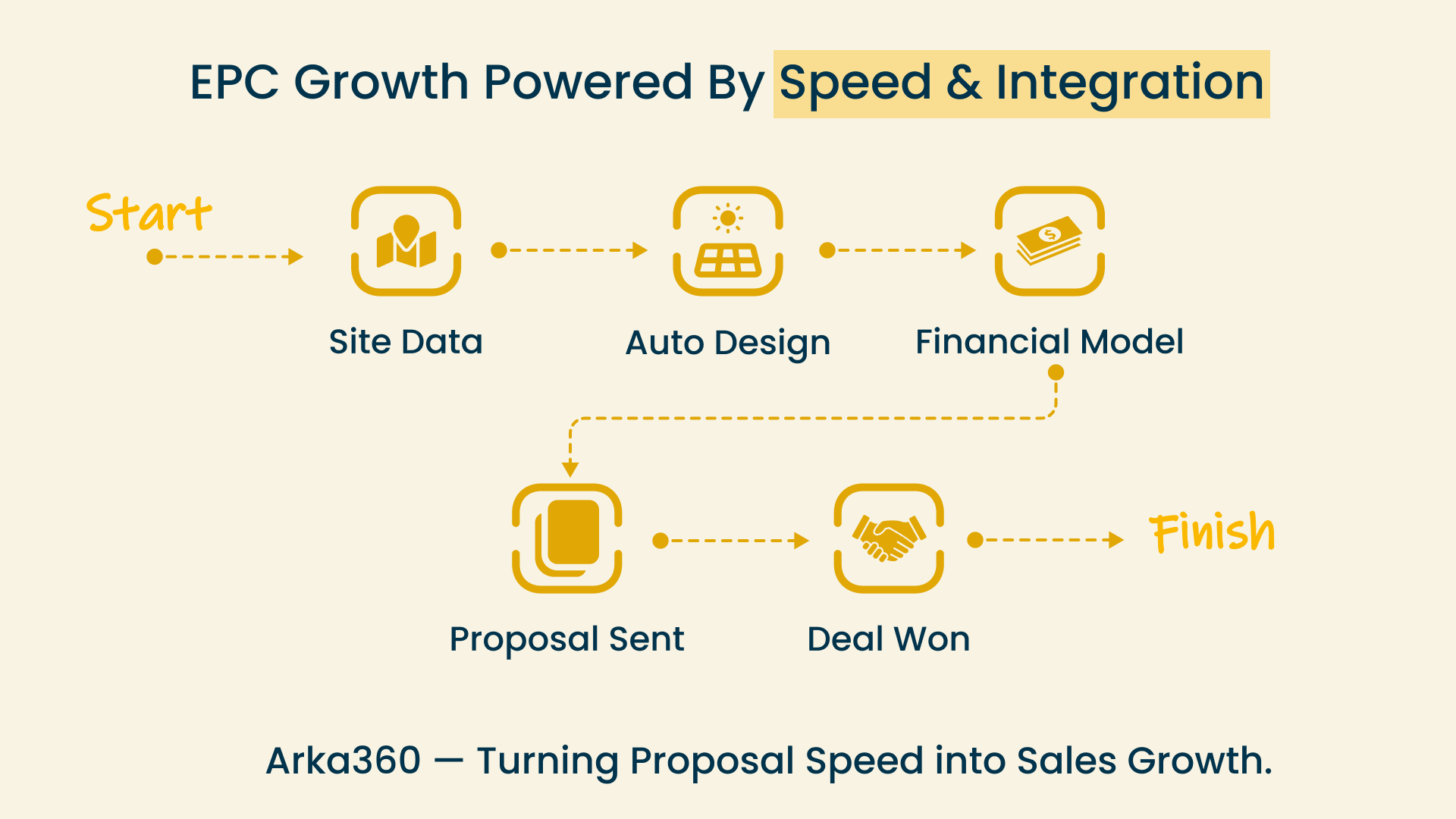
For EPCs (Engineering, Procurement, and Construction companies) in the Philippines, a slow proposal process often means losing deals to faster competitors.
When a client asks for a system design or quotation, every hour matters. Yet, many EPCs are still tied to manual workflows of switching between spreadsheets, CAD tools, and emails just to create a single proposal. By the time it’s finally ready, the client may have already signed with someone else or lost interest.
But things have started to change. With the rise of solar proposal software, EPCs can now streamline their entire workflow—designs, financial models, and proposals—all within one platform. So now the projects that once took a week to finalize can be ready in a few hours.
Let’s break down why proposal delays are such a big challenge in the Philippines, how software transforms the process, and what features really make a difference.
The Philippines has seen a sharp rise in solar adoption in recent years, with residential, commercial, and industrial customers all seeking sustainable energy solutions. Yet, many EPCs are still working with outdated, manual systems that slow everything down—from design to proposal delivery.
Most EPCs still rely on CAD drawings, spreadsheets, and site surveys that need to be manually updated and double-checked. This means each project requires hours of repetitive data entry—coordinates, load calculations, roof angles, and component lists—all done by hand.
Not only does this take time, but it also increases the risk of errors. A single incorrect value can send the design team back to square one, delaying client presentations and approvals.
Proposal delays often stem from a lack of integration between departments. The design team might work in one tool, the sales team in another, and the finance team in a completely different system. Without a unified workflow, even a simple change—like adjusting system size or financing terms—can trigger days of back-and-forth communication.
Unlike other markets, Philippine EPCs face unique challenges such as region-specific paperwork, net-metering approvals, and financing alignment with local lenders. Each step requires careful coordination and documentation. When done manually, this process is not just time-consuming—it’s prone to delays that can cost potential deals.
In solar sales, time-to-proposal directly affects conversion rates. When clients request a system design and quote, they usually reach out to multiple EPCs. The one that responds fastest—while maintaining professional accuracy—has a much higher chance of winning the deal.
In short, the longer it takes to deliver a proposal, the more likely the prospect move on.
So, what changes when an EPC switches from spreadsheets and manual CAD work to solar proposal software? In short—everything.
A modern proposal platform centralizes the entire workflow. Instead of juggling tools for design, pricing, and finance, EPCs can complete all these steps in one connected environment.
Automation is the biggest game-changer. Tasks that once took hours—like panel layout, shading analysis, and performance simulations—can now be done in minutes. With AI and LIDAR technologies, the software automatically identifies rooftops, detects obstructions, and suggests the most efficient panel placements. The system even recalculates production instantly when the design is modified.
Another huge advantage is integration. Solar proposal tools can connect design data directly with CRMs and financing systems. That means the sales team no longer needs to request updated numbers from design engineers or wait for finance to review ROI manually. Once the system size or financing term is changed, the proposal updates automatically.
The role of AI and 3D modeling in this process is hard to overstate. These technologies give EPCs the ability to produce detailed, accurate, and visually compelling proposals without physically visiting the site. 3D models help visualize the installation environment, providing clients with a clear understanding of what the system will look like and how it will perform.
The impact is tangible. Many EPCs see a 50% to 70% reduction in proposal turnaround time after adopting automation tools. Designs become more precise, revisions happen instantly, and clients receive professional proposals faster than ever before.
Speed isn’t just a technical advantage—it’s a sales strategy. In the Philippines’ competitive solar market, faster proposal delivery directly impacts trust, efficiency, and revenue. Here’s how:
When customers receive a complete solar proposal within a few days, it creates a strong first impression—one that often determines who wins the deal.
In short, faster solar proposals mean your existing team can serve more clients in less time—making your business more agile and scalable.
Many EPCs that adopt automation or solar ROI software report a 20–30% increase in conversions, simply because they’re first to deliver a polished, data-backed proposal.
For EPCs in the Philippines, mastering proposal speed means turning time into revenue—converting efficiency into lasting business growth.
.png)
Choosing the right solar proposal software can completely transform how fast your team works—from design to client approval. The best tools go beyond visuals and calculations; they simplify every stage of the process, making it easier for EPCs to respond quickly, accurately, and professionally. Here are the key features to look for when selecting the best solar software in the Philippines.
Automation is the heart of faster proposals. Look for software that offers:
These automated tools eliminate hours of manual design work, allowing EPCs to generate accurate layouts without jumping between CAD programs. The result: proposals ready in hours instead of days.
Solar proposals aren’t just about design—they’re about showing financial value. A strong software platform includes:
By integrating these features, EPCs can instantly present clients with cost-saving projections and long-term returns—without exporting data to spreadsheets.
The most efficient EPC proposal tools are those that connect seamlessly across departments. CRM integrations help track leads, update project stages, and auto-fill client data, cutting down manual entry.
Meanwhile, solar software integrations in the Philippines that link with financing partners allow EPCs to generate client-approved loan options directly within the platform. This reduces follow-ups and accelerates deal approvals—no more waiting days for financing verification or rate updates.
For mid-to-large EPCs managing multiple teams and projects, scalability is key. Cloud-based software ensures that:
This flexibility allows businesses to expand operations effortlessly while maintaining proposal consistency and accuracy across every client interaction.
.png)
Here’s a simple, real-world look at how one EPC in the Philippines slashed its proposal time from 7 days to just 3 days using automation.
The EPC’s old workflow looked like this:
Each proposal took nearly a week, leaving less time to follow up on new leads or improve design accuracy.
Once the EPC adopted solar project automation software, everything changed:
This simple workflow shift shows how proposal workflow optimization helps EPCs close more deals, faster—and with far less effort.

In the fast-paced Philippine solar market, speed is everything. Every day lost in creating a proposal means losing a potential deal to a faster competitor. That’s where Arka360 solar software Philippines gives EPCs the edge.
By combining design, financing, and CRM integration in one platform, Arka360 helps EPCs move from manual work to fully automated proposal workflows. Site data, layouts, shading, financials, and approvals — all flow seamlessly, cutting proposal time by 50%. No more juggling multiple tools or waiting days for revisions.
For EPCs aiming to scale operations and boost solar sales growth Philippines, Arka360 is purpose-built to deliver speed, accuracy, and consistency at scale.
👉 Ready to see how fast your team can move? Book a demo and discover how Arka360 can help you cut proposal time in half while winning more solar projects.













